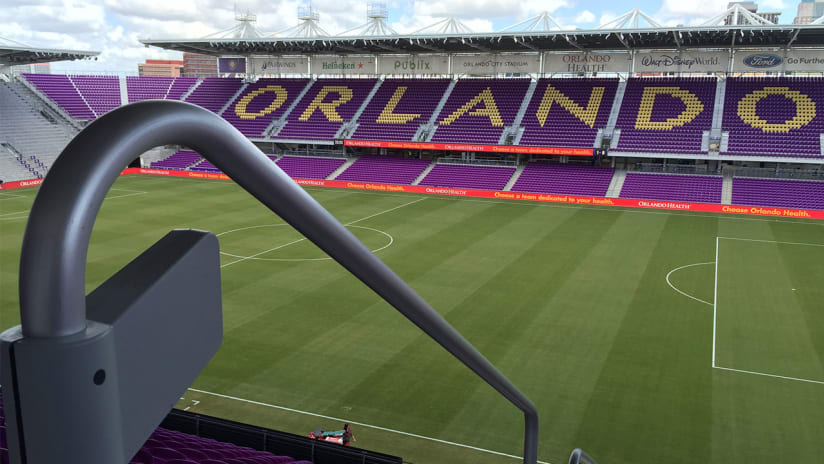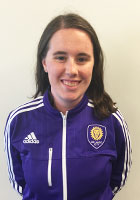Orlando City Stadium is revolutionary in a lot of ways. For fans who have visited the stadium over the last month, you have seen some of those luxuries up close. But none of the amenities are better than the #OCStadiumWifi.
Chief Information Officer Renato Reis was in charge of developing that wi-fi, and it has been an important point of conversation for the organization since the early days of stadium design and construction.
“We had the privilege to be able to learn the lessons from other major teams, especially the 49ers and Levi's Stadium,” Reis said. “Which is today probably where every other sports and entertainment organization wants to be in terms of providing experience to their fans or people who are attending the events.”
“When you think about a location where you are providing a wi-fi network, it’s the ratio between users and access points (pictured above). That’s the first thing that has to be attended to. Also, the locations where you are broadcasting those signals. And how you’re broadcasting,” Reis said. “Every stadium is a specific case. We are able to see and learn from organizations like the 49ers and since we built this stadium, we were able to try to get those numbers as right as we can. So, to give an idea, the 49ers have an average of 75 users per access point. We have an average of 43 per access point.”
Of course, Levi’s Stadium seats 70,000 people whereas Orlando City Stadium seats 25,500. The situations are different, but Orlando City was able to look at what they did at Levi’s Stadium and other venues across the country and work that to this team’s benefit.
“We had the opportunity to learn from the best and adapt to our reality, which gives us a bit of a competitive advantage if you think about experience, even in other local arenas. Camping World Stadium is a different situation. It’s an older stadium, all concrete. So, they actually installed their wifi after the stadium was built,” Reis said. “In our case, we were able to run wires in the proper location under the bleachers and get antennas on the railings. If you look at our railings, we have antennas in every other section. And also we have antennas up and we have antennas under the seats. So, it’s not just that we have a great average, we are able to set our blockage and our view for the waves, but we’re also able to triangulate. If you are in a certain location, I am able to know from one of my ‘up’ antennas where you are for the GPS location. Also, my side antennas will give me a position as to where you are related to lateral positions. But, it’s not just that I know where you are. I can offer you the best connection from one of those three points. So, those are things that we learned from other facilities, other venues.”
Another thing that the team had to look at was how many users they had on the network at once and how much of the signal could be divided then between those users. That was something the team was measuring in the first two home matches.
“So, you have ten gigabits that you can give to your uses to go down or up-- upload or download. So, what you have to do is you have to calculate. I have ten gigabits and I have 25,000 people. Connectivity is nothing more than a pipe; so I give you a pipe of water, and I have ten people to drink this water. So, they’re going to be able to drink, at the same time, just a certain quantity of water. So, you have to divide that,” Reis said. “I have 25,000 people, I have 10 gigabits of bandwidth, how do I distribute that? Luckily, we also know that people don’t stay connected more than 30 minutes during an event… So, today we are able to give 100 megabytes up and 100 megabytes down per user. And this is great, this is better than the connection most of us get in our homes.”
After collecting the data from last week’s match, Reis feels like his team has made the necessary changes and that the wifi will be operating at full potential at this weekend’s match against the LA Galaxy.
“Last weekend one terabyte of data came across our network, in terms of transactions up and down,” Reis said. “The peak time was a few minutes before halftime, and we had about 7,500 logged into the network at the same time.”
“The first two games were the trial, so we went 20 megabytes per user,” Reis said. “This week, we did a tune-up and we should be at the top of our game.”





